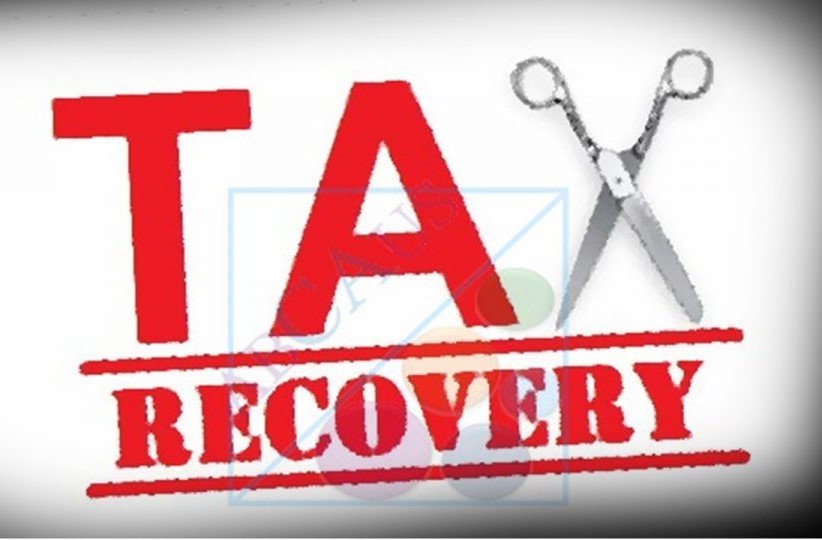Tax recovery has always been a critical component of the financial ecosystem in India. Ensuring smooth recovery of taxes owed by taxpayers requires a well-defined administrative structure, which was, for a time, supported by the role of the Tax Recovery Commissioner. While this position played a significant part in tax recovery during its existence, it was eventually deemed unnecessary and omitted from the statute. Let’s dive into 5 key insights about the history, responsibilities, and ultimate abolition of the Tax Recovery Commissioner under Indian tax laws.

1. Introduction of the Tax Recovery Commissioner
The term “Tax Recovery Commissioner” was introduced through the Finance (No. 2) Act, 1971, and codified under section 2(43B) of the Income Tax Act, effective from 1st January 1972. This role was part of a structured approach to tax recovery, with clearly defined powers and responsibilities.
According to the law, unless specified otherwise, a Tax Recovery Commissioner referred to:
- A Commissioner or an Assistant Commissioner of Income-tax,
- Authorized by the Central Government via a notification in the Official Gazette,
- Empowered to supervise and oversee the work of Tax Recovery Officers (TROs).
The inclusion of this role aimed to improve the efficiency of tax recovery operations, particularly in larger jurisdictions where significant amounts of taxes remained unpaid.
2. Purpose and Need for the Role
During the 1970s and 1980s, tax administration in India faced challenges due to fragmented workflows between various authorities. The Tax Recovery Commissioner was introduced to:
- Streamline Tax Recovery: Ensure that recovery efforts were coordinated across jurisdictions.
- Enhance Oversight: Supervise TROs and provide them with clear directives to improve efficiency.
- Strengthen Accountability: Act as a single point of contact for the Central Government in matters of tax recovery.
This role helped bring order to tax recovery operations, particularly in “bigger charges” or areas with higher tax liabilities.
3. Omission of Section 2(43B)
As part of efforts to modernize and streamline the tax administration framework, section 2(43B) defining the Tax Recovery Commissioner was omitted by the Direct Tax Laws (Amendment) Act, 1987, effective from 1st April 1989.
The rationale for this omission was clarified in Departmental Circular No. 551, dated 23-1-1990, which highlighted the following:
- Improving Coordination: It was decided that Tax Recovery Officers (TROs) should work directly under the administrative control of their respective Administrative Commissioners.
- Eliminating Redundancy: The specialized wings of Tax Recovery Commissioners were found to be unnecessary as their duties could be efficiently handled by existing administrative structures.
- Cost Efficiency: The abolition of the role reduced administrative overheads and improved direct communication between Assessing Officers (AOs) and TROs.
4. Impact of the Omission
The removal of the Tax Recovery Commissioner from the Indian tax framework had significant implications:
- Streamlined Administration: By placing TROs under Administrative Commissioners, the tax recovery process became more integrated with general tax assessment operations.
- Improved Efficiency: The coordination between AOs and TROs was enhanced, leading to faster recovery of dues.
- Reduced Complexity: With one less administrative layer, taxpayers and authorities experienced fewer procedural delays.
This omission reflected a larger trend in Indian tax law—simplifying processes while improving accountability and efficiency.
5. Lessons from the Evolution of Tax Recovery Administration
The abolition of the Tax Recovery Commissioner role is a case study in administrative restructuring. It shows how government bodies must evolve to meet changing demands:
- Focus on Simplification: Reducing bureaucratic layers helps speed up processes.
- Adapting to Modern Needs: The tax system in India has shifted toward digital solutions and integrated frameworks, making roles like the Tax Recovery Commissioner redundant.
- Efficiency over Redundancy: Modern administrative practices prioritize efficiency by consolidating responsibilities and reducing overlap.
FAQs
1. When was the role of Tax Recovery Commissioner introduced?
The Tax Recovery Commissioner was introduced under section 2(43B) of the Income Tax Act through the Finance (No. 2) Act, 1971, effective from 1-1-1972.
2. Why was the role of Tax Recovery Commissioner abolished?
The role was abolished to improve coordination between Tax Recovery Officers (TROs) and Assessing Officers (AOs), eliminate redundancy, and streamline the administrative structure under Administrative Commissioners.
3. When was section 2(43B) omitted?
Section 2(43B) was omitted by the Direct Tax Laws (Amendment) Act, 1987, with effect from 1-4-1989.
4. What replaced the functions of the Tax Recovery Commissioner?
The duties of the Tax Recovery Commissioner were integrated into the responsibilities of Administrative Commissioners, ensuring better control and oversight of tax recovery operations.
Conclusion: A Step Toward Progress
The role of the Tax Recovery Commissioner, while relevant in its time, became obsolete as India’s tax administration evolved. The omission of section 2(43B) and the subsequent restructuring of tax recovery operations marked a turning point toward modernization and efficiency.
To ensure smooth tax compliance and optimize savings, it’s important for taxpayers to explore modern tax-saving strategies. Learn how to reduce your tax burden effectively by visiting our comprehensive guide on Smart Tax Saver.
By simplifying processes, reducing redundancy, and embracing digital transformation, India’s tax system has positioned itself to meet the demands of a growing economy, ensuring fairness and efficiency for all stakeholders.



